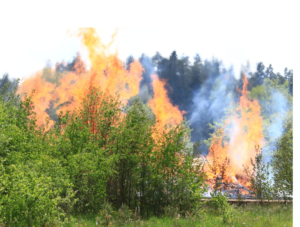
In a surprising turn of events, David Johnston,81,the former Governor General of Canada, has announced his resignation from his role as the head of a high-profile investigation into election interference in Canada. Johnston’s decision has raised eyebrows and sparked a wave of speculation about the reasons behind his departure. This blog post aims to delve into the details surrounding his resignation and explore the potential implications for Canada’s electoral process.
Background:
David Johnston who was appointed in March to investigate allegations of Chinese interference in federal elections of Canada in 2019 and 2021.The government chose David Johnston, a well-known figure in Canadian politics, to head an impartial investigation into claims of election interference during the most recent federal election. The purpose of the investigation is to uphold the legitimacy of the democratic process and preserve public confidence in Canada’s electoral process. For such a significant position, Johnston—known for his commitment to upholding democratic values—seemed like a natural choice.
The Sudden Resignation
Johnston’s abrupt resignation has many people confused in the midst of the in progress investigation. Although no specific explanations have been given in writing, theories abound. Some speculate that he may have left for personal reasons, while others think that political pressure or conflicts of interest may have jeopardised the investigation’s independence and credibility.Given Johnston’s reputation for integrity, these theories have gained traction and fueled public curiosity
Implications and Concerns:
Concerns have been expressed about the investigation into election interference in light of Johnston’s resignation. Concerns about the continuity, timeline, and objectivity of the investigation surface as a result of the need for a new leader. As they seek assurances that the investigation will be conducted impartially and without undue influence, the public’s confidence in the process may be shaken.
Additionally, the resignation brings attention to the problem of election interference itself. The democratic fabric of Canada is at risk due to the claims of foreign interference or other manipulative methods, so it is imperative to address these worries as soon as possible and decisively. The resignation of a prominent person like Johnston might make the public lose faith in the investigation’s ability to produce objective and thorough results.
The Way Forward:
It is crucial that the Canadian government act quickly to regain public trust in the investigation in the wake of David Johnston’s resignation. The selection of a new leader must be done openly and with an eye towards maintaining the independence of the investigation. The public’s concerns should be addressed in communications from relevant authorities, and it should be emphasised that they remain committed to fully examining allegations of election interference.
This incident also emphasises the necessity of ongoing efforts to protect Canada’s electoral system. It is essential to take steps to improve cybersecurity, guard against foreign interference, and guarantee political financing transparency. The government must act to strengthen public confidence in the voting process and proactively address any potential weaknesses.
Conclusion
David Johnston’s resignation from his role investigating election interference in Canada has sent shockwaves through the political landscape. While the exact reasons for his departure remain unclear, the incident raises questions about the continuity and credibility of the investigation. It is essential for the government to act swiftly and transparently to address these concerns and restore public trust. Ultimately, the investigation’s findings and subsequent actions will be critical in upholding the integrity of Canada’s democratic system and ensuring fair and transparent elections for all citizens.We Ontario Centrist Party are dedicated to building a better Ontario for all its canadian residents. .
#Canada #OntarioCentristParty#politics #Ontario #davidjohnston #Toronto #immigration #Davidjohnston #Toronto








